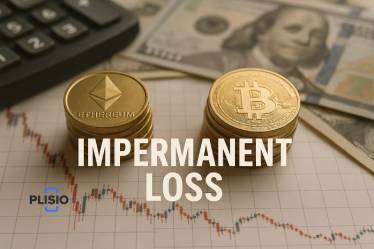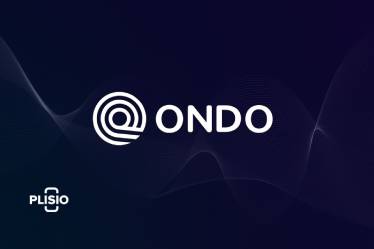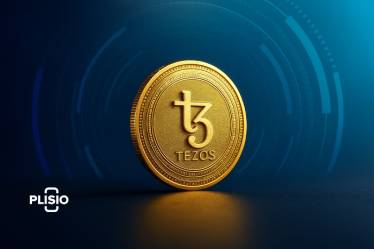Quant (QNT) – Live Crypto Overview and USD Price (2025 Update)
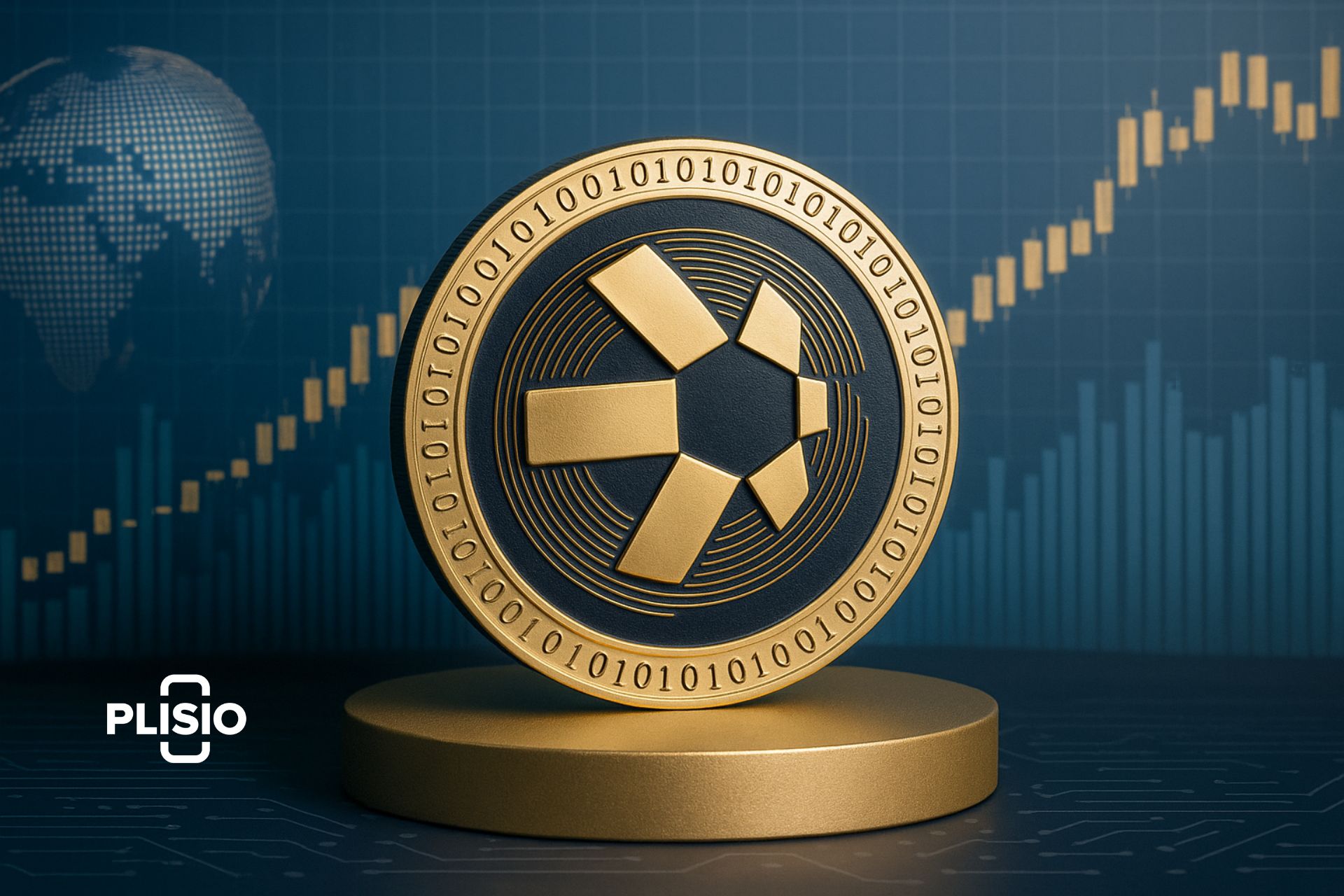
Quant (QNT) remains one of the most significant crypto projects addressing interoperability in blockchain networks. Acting as a bridge between private networks (such as banks or corporations) and public blockchains, it helps organizations integrate decentralized systems securely and efficiently.
In 2025, Quant’s flagship product, the Overledger Network, continues to serve as the world’s first blockchain operating system, enabling multiple blockchain-based projects to communicate through a single gateway. Overledger simplifies how businesses build decentralized multi-chain applications (mDApps) and interact with distributed ledger technology (DLT). The company’s partnerships with central banks, regulators, and enterprise clients further cement Quant’s position in global digital infrastructure.
Quant Network History and Development of QNT
Founded by Gilbert Verdian in 2015, Quant Network was created to solve the interoperability gap between different blockchain technologies. Verdian, who has over 20 years of industry experience, previously worked as Chief Information Security Officer at the UK Ministry of Justice and served as an advisor to central banks and the EU Parliament on blockchain technologies.
In 2018, Quant raised over $11 million USD through an ICO that launched the QNT token. Co-founders Colin Paterson (formerly of Deutsche Bank and Vocalink, acquired by Mastercard) and Paolo Tasca, a special advisor on blockchain technologies and academic leader at UCL, strengthened the company’s foundation with technical and economic expertise.
By 2025, Quant has expanded its partnerships to include Oracle, LCX Exchange, and various central banks, driving adoption of CBDCs and multi-ledger technologies.
Overledger Network – Quant’s Solution for Blockchain Interoperability
The Overledger Network addresses the interoperability problem by creating a network of networks. It connects blockchains, private networks, and legacy enterprise systems through a DLT gateway, ensuring seamless interoperability and data transparency.
Overledger is not a blockchain itself—it’s a middleware operating system that acts as a gateway for any blockchain-based project, providing cross-chain communication, smart contract execution, and decentralized governance. This makes it a vital part of enterprise blockchain adoption in financial and public sectors.
By 2025, more than 40 enterprise clients and numerous central banks worldwide have explored or implemented solutions using Overledger, confirming its growing institutional relevance.
Technical Insights: How Quant Works
Quant enables developers to build decentralized multi-chain applications (mDApps) that operate across multiple blockchains. With the help of Overledger APIs and SDKs, developers can design scalable, smart contract-enabled systems on Ethereum, Bitcoin, Ripple, Hyperledger Fabric, and more.
The Overledger Network also features a Quant App Store, allowing developers to publish applications and earn QNT for their services. This marketplace drives further growth for Quant services and ensures interoperability between enterprise software solutions.
Quant Network Use Cases and Enterprise Applications
Quant’s Overledger brand of enterprise software solutions continues to expand across sectors:
- Finance: powering CBDCs, stablecoin issuance, and cross-border payments.
- Supply chain management: enabling transparent, real-time tracking of goods.
- Digital identity: supporting secure verification systems.
- Government and justice systems: improving data sharing between agencies.
In 2025, Quant’s clients include several European financial institutions and tech firms, showing growing adoption of multi-ledger technology.
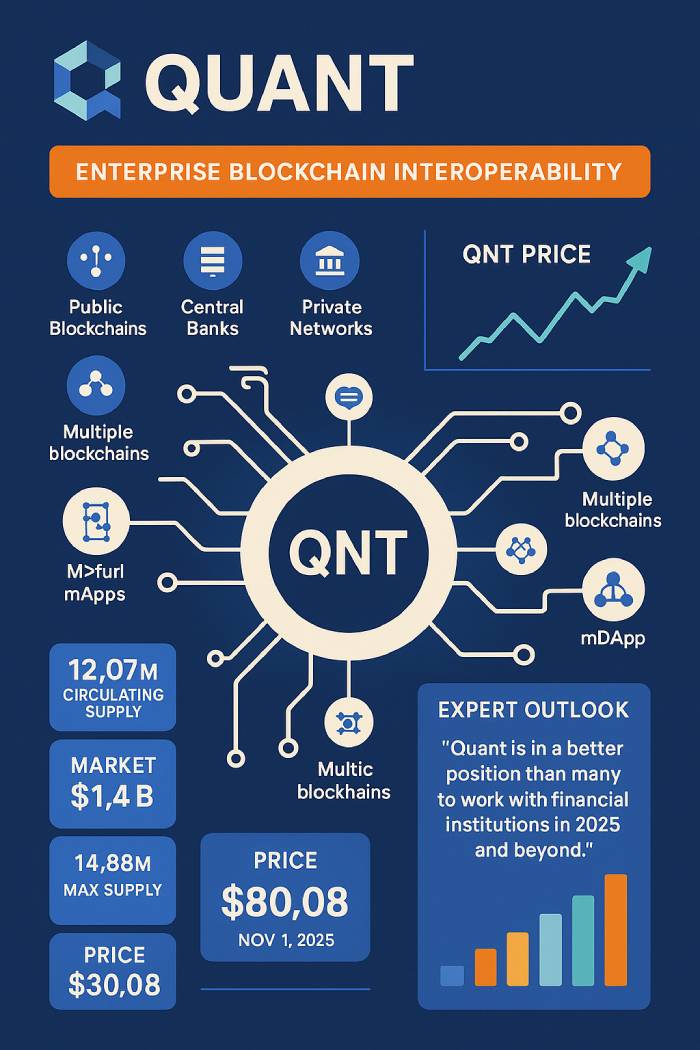
QNT Token Utility and Economic Model
The QNT token, an Ethereum-based token, is used to power Quant Network’s Overledger brand. It is required for:
- Paying licensing and access fees (QNT to pay for APIs, gateways, and data services).
- Staking by gateway operators (hold a certain amount of Quant to operate nodes).
- Transaction validation and treasury rewards.
QNT remains deflationary, as tokens are locked when enterprises purchase annual licenses. This utility model creates continuous demand for the token, supporting its long-term price stability.
Market Statistics and Live QNT Price (2025)
As of early 2025:
- Circulating Supply: ~12.07 million QNT
- Total Supply: 14.88 million QNT
- Market Capitalization: ≈ $1.38 billion USD
- Live Quant Price Today: ≈ $123.60 USD, with a yearly growth of +23.6%
- Forecast Range (2025): Analysts expect QNT between $90 and $180 USD, averaging around $120
These figures position Quant among the top 70 cryptocurrencies by market cap.
Expert Opinions on Quant (QNT)
Analysts remain cautiously optimistic about Quant’s prospects:
- DigitalCoinPrice (2025): predicts Quant could reach $222 USD, citing its growing enterprise partnerships.
- Bankless Times (May 2025): highlights Quant’s “40% upside potential” driven by reduced exchange reserves and CBDC developments.
- Disruption Banking (Jan 2025): notes Quant’s strong relationships with financial institutions, calling it “one of the most credible enterprise interoperability projects.”
- CCN (2025): warns that while long-term growth looks bullish, short-term corrections to $90–100 remain likely.
Why Does QNT Have Value?
QNT’s intrinsic value lies in its mandatory role within the Overledger Network. Every Overledger user—enterprise or developer—must pay in QNT for access, licenses, and transactions.
The interoperability of the network has become a cornerstone for blockchain technologies seeking to connect to legacy financial infrastructure. As tokenization and digital asset integration accelerate globally, QNT’s importance as a utility token is projected to increase.
Why Invest in Quant (QNT)?
Experts see Quant as a long-term crypto asset that bridges traditional finance and decentralized technology. With its focus on enterprise interoperability, regulatory compliance, and institutional partnerships, Quant continues to attract investors looking for utility-driven blockchain exposure.
As Gilbert Verdian said in a 2025 panel on digital finance: “Interoperability isn’t just about technology—it’s about creating a connected economy where value moves freely between systems.”
Quant embodies that vision, serving as a gateway to a decentralized, multi-chain future that aligns innovation with the needs of global finance.

